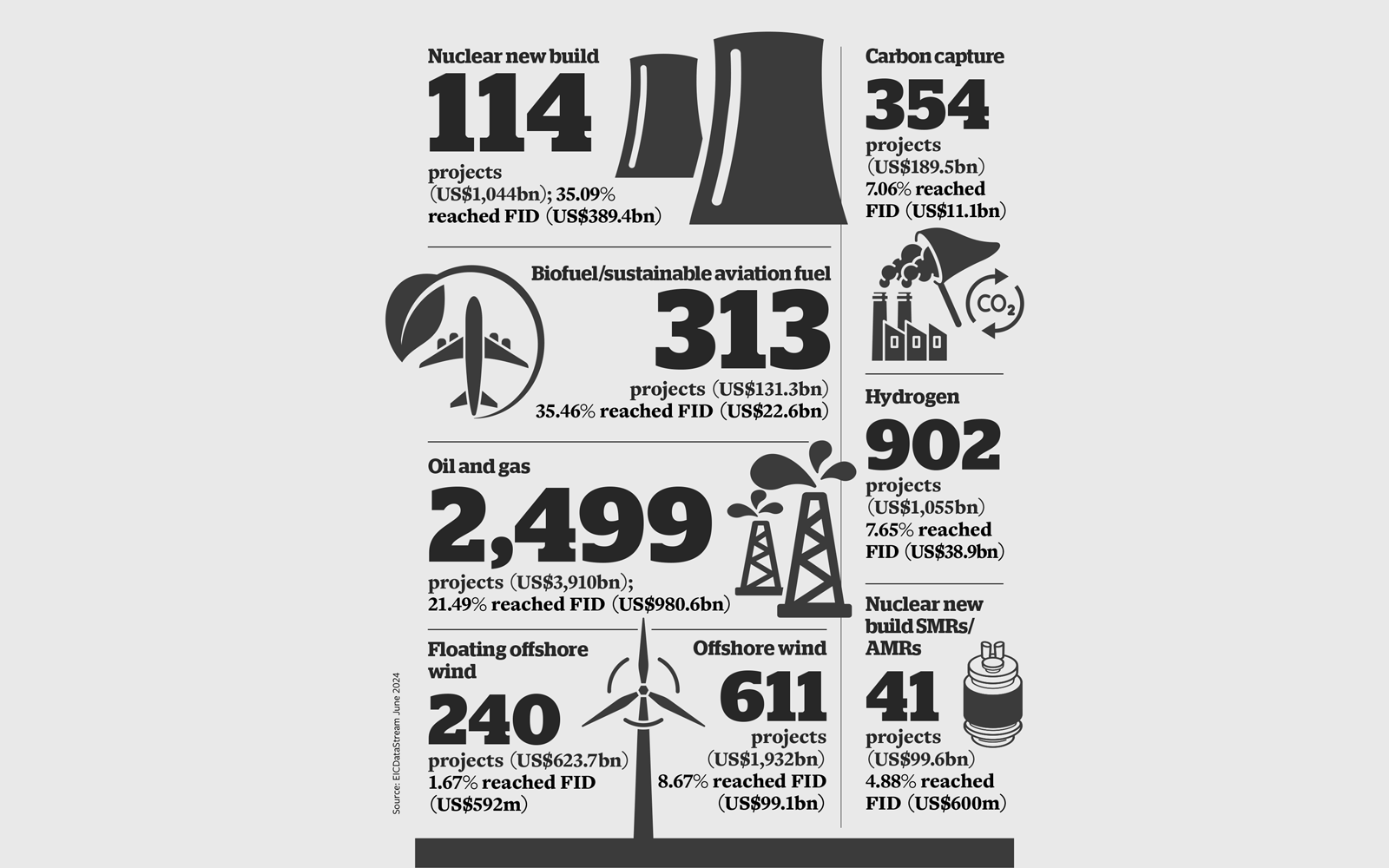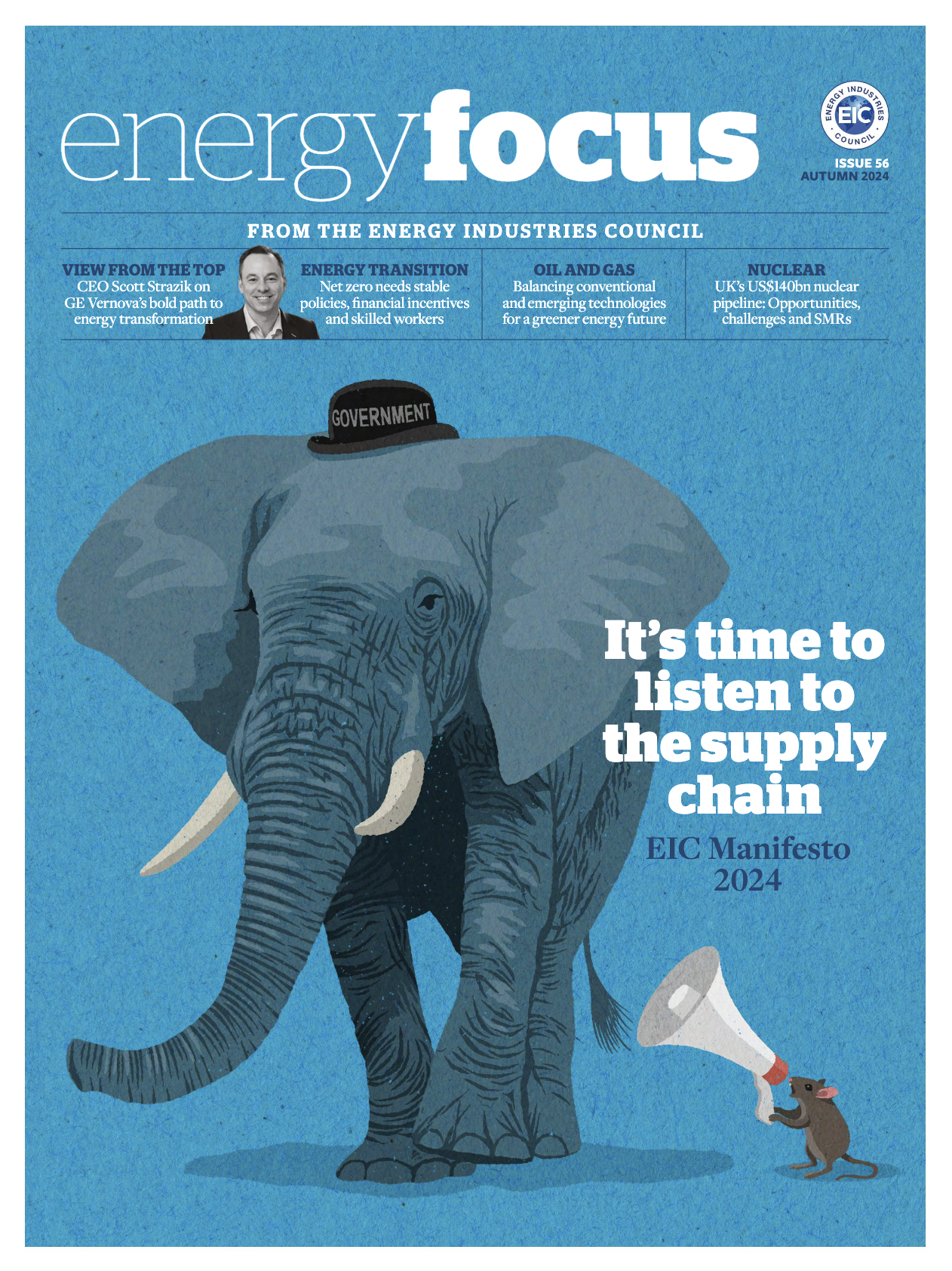Driving the energy transition
The message from EIC members is clear: reaching net-zero targets hinges on having consistent and supportive policies, well-designed financial incentives and a skilled workforce, says Mahmoud Habboush at EIC

Achieving net zero requires more than ambition; it demands a supportive environment for innovation, investment and skilled labour. EIC research, featured in its annual Survive and Thrive and Net Zero Jeopardy reports, reveals that energy leaders believe a supportive and stable policy environment, targeted financial incentives and a skilled workforce are crucial to reach net-zero targets. A disciplined and well-executed approach is essential to navigate the energy transition successfully. EIC has identified several key areas as critical to this process.
Policy stability and support
A stable and supportive policy environment is crucial. Governments must provide clear, consistent guidelines and long-term political agreements to encourage long-term investment in energy transition projects. Without a coherent and consistent policy framework, investors tend to be hesitant and cautious, undermining progress.
The need for tailored financial incentives
Better access to funding and financial support is a critical concern that is repeatedly highlighted by businesses in discussions with EIC. Many of these companies grapple with high operational costs and navigate complex regulatory landscapes, while existing financial incentives fall short of being truly effective.
To meet net-zero goals, it is essential for governments to offer tailored financial incentives, grants and subsidies that cater to the unique needs of specific sectors, including carbon capture and nuclear energy.
Supply chain integration
A crucial aspect of both financing and supply chain considerations is recognising that there is one integrated supply chain in the energy industry, working across the various sectors.
EIC data shows that the bulk of this supply chain remains rooted in oil and gas, and relies on revenue from hydrocarbons to finance energy transition activities. Specifically, 82.9% of the UK’s energy supply chain relies on oil and gas, with 44.7% of that oil and gas supply chain also diversified into renewables and net-zero technologies.
Boosting UK competitiveness
For companies operating internationally, navigating different regulatory environments poses a major challenge. The complexity and variation in different countries’ regulations and support for the oil and gas sector can make it difficult for companies to access export finance support. Harmonising regulatory frameworks and providing clear, consistent guidelines could significantly reduce compliance burdens and operational costs.
EIC research also shows that building robust international partnerships and leveraging diplomatic networks could provide crucial support for businesses expanding internationally. Specifically, companies have called for more free trade agreements to lower barriers, reduce tariffs and facilitate smoother export processes. Relatedly, companies see maintaining strong relationships with key economies as a route toward overcoming protectionist policies that restrict competition and threaten free trade.
Fuelling innovation through investment
Innovation is essential for the energy transition, but it requires substantial investment and time. Companies need funding for both early-stage technology development and commercialisation. Government commitment to supporting research and development initiatives aimed at enhancing competitiveness and innovation is essential.
Addressing the skills gap
In some regions, particularly the UK, Europe and the US, there is a pressing need for skilled labour to build energy transition projects. Many companies are establishing internal academies and training programmes to develop the capabilities. Government support in the form of subsidies for training programmes and initiatives to attract and retain talent will be crucial in meeting the increasing demands of the energy transition. Although some skills-related challenges may not yet be apparent, they are likely to become significant as more announced projects reach the final investment decision stage.
Governments must provide clear, consistent guidelines and long-term political agreements to encourage long-term investment in energy transition projects
A steady pipeline of projects
All of this is irrelevant to supply chain businesses if no work comes their way. A steady pipeline of projects is essential for these companies to continue to thrive and play their part in the energy transition. However, there are significant uncertainties around project timelines. Some of these uncertainties are directly related to delays in final investment decisions, while others stem from unpredictable policy shifts. Many companies are overextending themselves in anticipation of promised net-zero projects that either fail to materialise or are less profitable and smaller in scale than expected.
The path forward
A successful net-zero transition requires a multifaceted approach, including the right policies, financial support and international collaboration. By addressing these key areas, the energy industry’s supply chain can thrive and drive the global transition towards a sustainable energy future.
EIC members speak out

Stronger political will is needed
Greg Arnold, Technology Director, Whessoe Engineering Ltd.
The drive for energy transition stems from five key pressures: social, political, economic, commercial and environmental. While there is broad support for transitioning to cleaner energy to combat climate change, many people are unwilling to pay significantly higher costs – two, three, or four times more than fossil fuels – without strong legislative measures. Politically, few governments are prepared to impose higher costs on their economies unilaterally.
Consequently, energy transition projects often progress slowly, moving through each engineering phase with great caution. Most projects are incremental, localised and relatively small-scale, with only a few large-scale global initiatives making headlines.
To accelerate the transition, it is crucial to economically support mid-scale projects. Such support would help align with government strategies and achieve progress. The burden of transition cannot rest solely on industry; stronger political will is needed to address the economic challenges.
EIC Manifesto 2024
The slow road to energy transition
The lack of FID in renewable and net-zero technologies underscores the fact that we lack the business case and the regulated processes to drive growth and demand
EIC final investment decision (FID) data reveals that, globally, oil and gas and large new nuclear projects, both fully regulated and mature industries, have the best FID rates, at 33.7% for upstream oil and gas, 20% for midstream and downstream oil and gas, and 39% for nuclear new build. This compares to only 5% for fixed offshore wind, 6% for carbon capture, 4% for hydrogen and 0.1% for floating offshore wind.
FID data is powerful, as it represents the threshold at which the supply chain can and will invest. Without FID, the many project announcements, net-zero ambitions and policy pledges are not bankable for the supply chain.

By Mahmoud Habboush, Communications Adviser, EIC
Image credit | iStock | Shutterstock






Follow us
Advertise
Free e-Newsletter